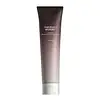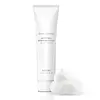What's inside
What's inside
 Key Ingredients
Key Ingredients

No key ingredients
 Benefits
Benefits

 Concerns
Concerns

 Ingredients Side-by-side
Ingredients Side-by-side

Water
Skin ConditioningGlycerin
HumectantCoco-Betaine
CleansingPropanediol
SolventPentylene Glycol
Skin ConditioningSodium Chloride
Masking1,2-Hexanediol
Skin ConditioningXanthan Gum
EmulsifyingHydroxyethylcellulose
Emulsion StabilisingPotassium Cocoyl Glycinate
Potassium Cocoate
EmulsifyingOryza Sativa Extract
AbsorbentPhyllostachys Pubescens Shoot Bark Extract
Skin ConditioningPanax Ginseng Root Extract
EmollientAspergillus Ferment Extract Filtrate
HumectantBeta-Glucan
Skin ConditioningButylene Glycol
HumectantTrehalose
HumectantCitric Acid
BufferingCyclodextrin
AbsorbentZanthoxylum Piperitum Fruit Extract
Skin ConditioningPulsatilla Koreana Extract
Skin ConditioningUsnea Barbata Extract
Ethylhexylglycerin
Skin ConditioningWater, Glycerin, Coco-Betaine, Propanediol, Pentylene Glycol, Sodium Chloride, 1,2-Hexanediol, Xanthan Gum, Hydroxyethylcellulose, Potassium Cocoyl Glycinate, Potassium Cocoate, Oryza Sativa Extract, Phyllostachys Pubescens Shoot Bark Extract, Panax Ginseng Root Extract, Aspergillus Ferment Extract Filtrate, Beta-Glucan, Butylene Glycol, Trehalose, Citric Acid, Cyclodextrin, Zanthoxylum Piperitum Fruit Extract, Pulsatilla Koreana Extract, Usnea Barbata Extract, Ethylhexylglycerin
Water
Skin ConditioningGlycerin
HumectantPalmitic Acid
EmollientLauric Acid
CleansingStearic Acid
CleansingPotassium Hydroxide
BufferingMyristic Acid
CleansingGlyceryl Stearate
EmollientPEG-32
HumectantCocamidopropyl Betaine
CleansingSodium Cocoyl Isethionate
CleansingGlycol Distearate
EmollientPEG-100 Stearate
Sodium Methyl Cocoyl Taurate
CleansingPhenoxyethanol
PreservativeParfum
MaskingSodium Chloride
MaskingAcrylates/C10-30 Alkyl Acrylate Crosspolymer
Emulsion StabilisingHydrogenated Coconut Acid
EmollientPolyquaternium-7
Arachidic Acid
CleansingSodium Isethionate
CleansingDisodium EDTA
PEG-14m
Emulsion StabilisingSodium Benzoate
MaskingSilica
AbrasiveKaolin
AbrasiveButylene Glycol
HumectantAlthaea Officinalis Root Extract
Skin ConditioningSaussurea Involucrata Extract
HumectantEthylhexylglycerin
Skin ConditioningLeontopodium Alpinum Extract
Skin ConditioningFreesia Refracta Extract
Skin ConditioningRose Extract
Skin ConditioningNelumbium Speciosum Flower Extract
Skin ConditioningLilium Tigrinum Extract
Skin ConditioningJasminum Officinale Extract
MaskingNarcissus Pseudo-Narcissus Flower Extract
Skin ConditioningIris Versicolor Extract
EmollientOxygen
Skin ConditioningHexyl Cinnamal
PerfumingButylphenyl Methylpropional
PerfumingLinalool
PerfumingBenzyl Benzoate
AntimicrobialLimonene
PerfumingAlpha-Isomethyl Ionone
PerfumingWater, Glycerin, Palmitic Acid, Lauric Acid, Stearic Acid, Potassium Hydroxide, Myristic Acid, Glyceryl Stearate, PEG-32, Cocamidopropyl Betaine, Sodium Cocoyl Isethionate, Glycol Distearate, PEG-100 Stearate, Sodium Methyl Cocoyl Taurate, Phenoxyethanol, Parfum, Sodium Chloride, Acrylates/C10-30 Alkyl Acrylate Crosspolymer, Hydrogenated Coconut Acid, Polyquaternium-7, Arachidic Acid, Sodium Isethionate, Disodium EDTA, PEG-14m, Sodium Benzoate, Silica, Kaolin, Butylene Glycol, Althaea Officinalis Root Extract, Saussurea Involucrata Extract, Ethylhexylglycerin, Leontopodium Alpinum Extract, Freesia Refracta Extract, Rose Extract, Nelumbium Speciosum Flower Extract, Lilium Tigrinum Extract, Jasminum Officinale Extract, Narcissus Pseudo-Narcissus Flower Extract, Iris Versicolor Extract, Oxygen, Hexyl Cinnamal, Butylphenyl Methylpropional, Linalool, Benzyl Benzoate, Limonene, Alpha-Isomethyl Ionone
 Reviews
Reviews

Ingredients Explained
These ingredients are found in both products.
Ingredients higher up in an ingredient list are typically present in a larger amount.
Butylene Glycol (or BG) is used within cosmetic products for a few different reasons:
Overall, Butylene Glycol is a safe and well-rounded ingredient that works well with other ingredients.
Though this ingredient works well with most skin types, some people with sensitive skin may experience a reaction such as allergic rashes, closed comedones, or itchiness.
Learn more about Butylene GlycolEthylhexylglycerin (we can't pronounce this either) is commonly used as a preservative and skin softener. It is derived from glyceryl.
You might see Ethylhexylglycerin often paired with other preservatives such as phenoxyethanol. Ethylhexylglycerin has been found to increase the effectiveness of these other preservatives.
Glycerin is already naturally found in your skin. It helps moisturize and protect your skin.
A study from 2016 found glycerin to be more effective as a humectant than AHAs and hyaluronic acid.
As a humectant, it helps the skin stay hydrated by pulling moisture to your skin. The low molecular weight of glycerin allows it to pull moisture into the deeper layers of your skin.
Hydrated skin improves your skin barrier; Your skin barrier helps protect against irritants and bacteria.
Glycerin has also been found to have antimicrobial and antiviral properties. Due to these properties, glycerin is often used in wound and burn treatments.
In cosmetics, glycerin is usually derived from plants such as soybean or palm. However, it can also be sourced from animals, such as tallow or animal fat.
This ingredient is organic, colorless, odorless, and non-toxic.
Glycerin is the name for this ingredient in American English. British English uses Glycerol/Glycerine.
Learn more about GlycerinChances are, you eat sodium chloride every day. Sodium Chloride is also known as table salt.
This ingredient has many purposes in skincare: thickener, emulsifier, and exfoliator.
You'll most likely find this ingredient in cleansers where it is used to create a gel-like texture. As an emulsifier, it also prevents ingredients from separating.
There is much debate on whether this ingredient is comedogenic. The short answer - comedogenic ratings don't tell the whole story. Learn more about comegodenic ratings here.
The concensus about this ingredient causing acne seems to be divided. Research is needed to understand if this ingredient does cause acne.
Scrubs may use salt as the primary exfoliating ingredient.
Learn more about Sodium ChlorideWater. It's the most common cosmetic ingredient of all. You'll usually see it at the top of ingredient lists, meaning that it makes up the largest part of the product.
So why is it so popular? Water most often acts as a solvent - this means that it helps dissolve other ingredients into the formulation.
You'll also recognize water as that liquid we all need to stay alive. If you see this, drink a glass of water. Stay hydrated!
Learn more about Water